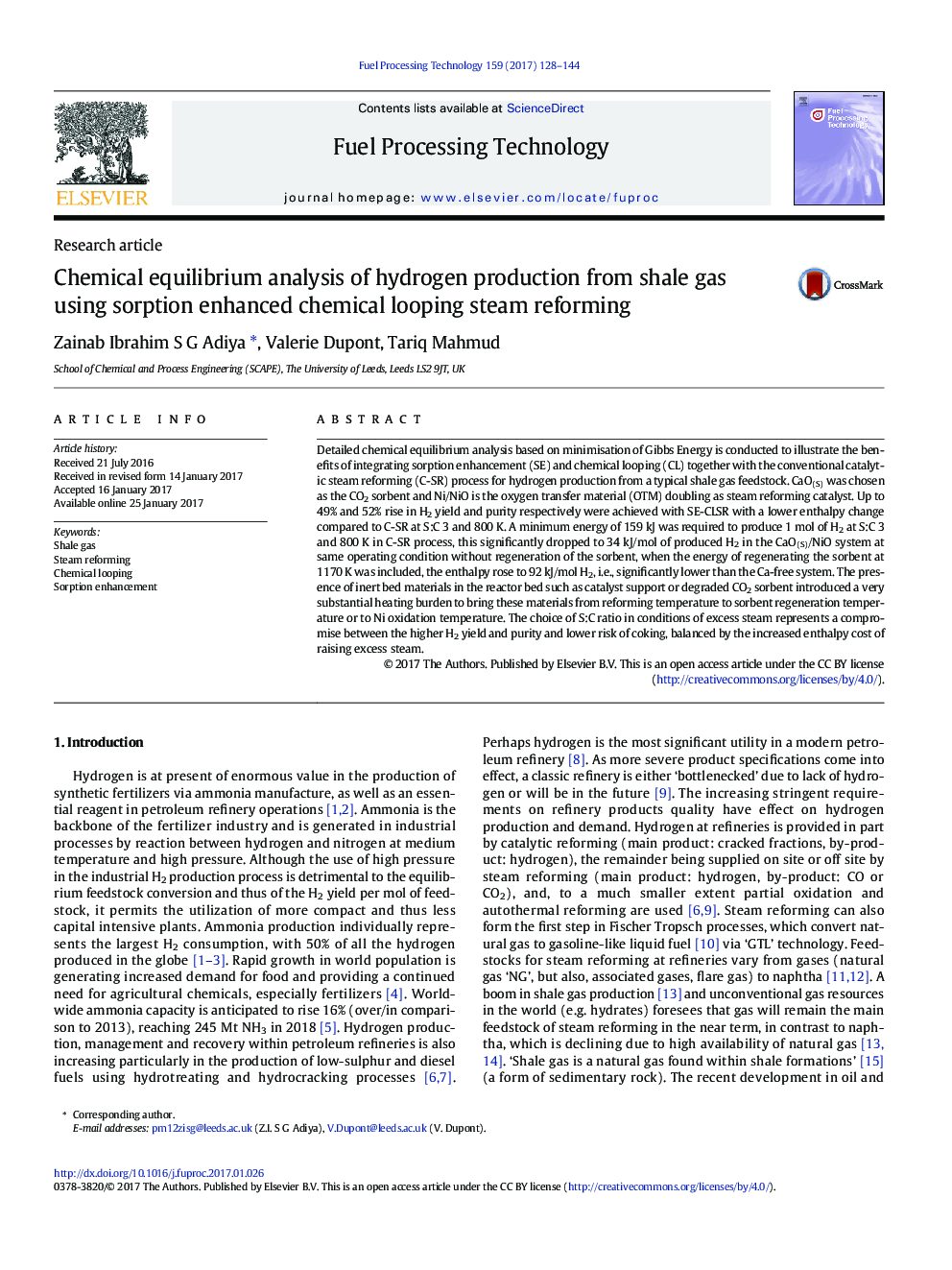| کد مقاله | کد نشریه | سال انتشار | مقاله انگلیسی | نسخه تمام متن |
|---|---|---|---|---|
| 4914351 | 1425387 | 2017 | 17 صفحه PDF | دانلود رایگان |
- Thermodynamics of conventional steam reforming (C-SR) with coupled CO2 sorption enhancement (SE) and chemical looping (CL)
- Feedstock was shale gas, with NiO oxygen transfer material and CaO as CO2-sorbents.
- SE-CLSR process is superior to C-SR in H2 yield, purity, & carbon prevention.
- Lower energy requirement for SE-CLSR incl. regeneration, compared to conventional SR
- SE-CLSR can be energy self-sufficient under well-chosen pressure, temperature, and S:C:Ni:Ca.
Detailed chemical equilibrium analysis based on minimisation of Gibbs Energy is conducted to illustrate the benefits of integrating sorption enhancement (SE) and chemical looping (CL) together with the conventional catalytic steam reforming (C-SR) process for hydrogen production from a typical shale gas feedstock. CaO(S) was chosen as the CO2 sorbent and Ni/NiO is the oxygen transfer material (OTM) doubling as steam reforming catalyst. Up to 49% and 52% rise in H2 yield and purity respectively were achieved with SE-CLSR with a lower enthalpy change compared to C-SR at S:C 3 and 800Â K. A minimum energy of 159Â kJ was required to produce 1Â mol of H2 at S:C 3 and 800Â K in C-SR process, this significantly dropped to 34Â kJ/mol of produced H2 in the CaO(S)/NiO system at same operating condition without regeneration of the sorbent, when the energy of regenerating the sorbent at 1170Â K was included, the enthalpy rose to 92Â kJ/mol H2, i.e., significantly lower than the Ca-free system. The presence of inert bed materials in the reactor bed such as catalyst support or degraded CO2 sorbent introduced a very substantial heating burden to bring these materials from reforming temperature to sorbent regeneration temperature or to Ni oxidation temperature. The choice of S:C ratio in conditions of excess steam represents a compromise between the higher H2 yield and purity and lower risk of coking, balanced by the increased enthalpy cost of raising excess steam.
53
Journal: Fuel Processing Technology - Volume 159, May 2017, Pages 128-144
